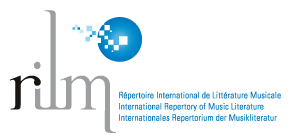Negracha: aspectos innovadores en el tango de Osvaldo Pugliese.
Palabras clave:
Pugliese, tango, Negracha, composición, innovaciónResumen
En este trabajo estudiamos la obra Negracha (1947) de Osvaldo Pugliese como ejemplo de una de las posibles configuraciones de la modernidad musical del tango en la “Época de Oro” del género (década de 1940), argumento que ha sido postergado en los ambientes de investigación musical. Realizamos una breve contextualización histórica de la labor del compositor, luego un análisis descriptivo de algunos aspectos esenciales de la pieza y, finalmente, unos comentarios generales de orden estético. Investigamos los procedimientos creativos presentados tanto en la composición como en el arreglo de la obra por medio del análisis estructural basado en la grabación orquestal de 1948 y su transcripción. Negracha resulta innovadora porque sus estructuras melódico-rítmicas repetitivas no se organizan según las características de un tango tradicional. Pugliese compone un tango con una idea ajena a la de oposición temática típica del género, creando una forma casi monotemática a partir de pocos elementos estructurales organizados alrededor de ostinatos rítmico-melódicos. En cuanto al aspecto estético, establecemos posibles vínculos entre la obra de Pugliese y algunas líneas de desarrollo posteriores –lo que comprobaría su aporte al corpus del tango– a la vez que proponemos el análisis musical como disparador de nuevas creaciones en el ámbito del tango rioplatense.
Descargas
Descargas
Publicado
Número
Sección
Licencia
Derechos de autor 2018 Bárbara Varassi Pega

Esta obra está bajo una licencia internacional Creative Commons Atribución-NoComercial 4.0.
Atribución/Reconocimiento-NoComercial 4.0 Internacional
https://creativecommons.org/licenses/by-nc/4.0/
Usted es libre de:
- Compartir — copiar y redistribuir el material en cualquier medio o formato.
- Adaptar — remezclar, transformar y construir a partir del material.
- La licenciante no puede revocar estas libertades en tanto usted siga los términos de la licencia
Bajo los siguientes términos:
- Atribución — Usted debe dar crédito de manera adecuada, brindar un enlace a la licencia, e indicar si se han realizado cambios. Puede hacerlo en cualquier forma razonable, pero no de forma tal que sugiera que usted o su uso tienen el apoyo de la licenciante.
- No Comercial — Usted no puede hacer uso del material con propósitos comerciales.
- No hay restricciones adicionales — No puede aplicar términos legales ni medidas tecnológicas que restrinjan legalmente a otras a hacer cualquier uso permitido por la licencia.
Avisos:
No tiene que cumplir con la licencia para elementos del material en el dominio público o cuando su uso esté permitido por una excepción o limitación aplicable.
No se dan garantías. La licencia podría no darle todos los permisos que necesita para el uso que tenga previsto. Por ejemplo, otros derechos como publicidad, privacidad, o derechos morales pueden limitar la forma en que utilice el material.






